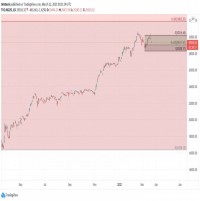|
Opalesque Industry Update - In recent research on advanced modelling for alternative investments*, supported by Newedge Prime Brokerage, EDHEC Risk Institute analysed whether portfolio selection techniques with a focus on extreme risks are truly superior to traditional return and risk analysis in situations when risk management matters most. The results show that in trying to minimise extreme risk and make their risk evaluation more sophisticated, many asset managers increase the number of risk parameters to be estimated, which in turn leads to less robust and less relevant results than if they had stuck with a simple measure of portfolio volatility. As outlined in the research, one key problem with explicitly introducing a focus on extreme risk in portfolio diversification techniques is that such techniques require estimates not only for variance-covariance parameters, but also for higher-order moments and comoments of the return distribution, the so-called coskewness and cokurtosis parameters, which describe how the portfolio constituents contribute to the overall fat-tailed and asymmetric distribution of the portfolio (skewness refers to the degree to which the distribution is skewed to the left or the right; kurtosis measures the “peakedness” of the distribution; a “fat tail” distribution is tilted towards the extremes). This is a formidable challenge that significantly exacerbates the dimensionality problem already present with mean-variance analysis. For example, optimising a portfolio which holds twenty assets would require the estimation of 210 variance-covariance parameters, 1,540 skewness-coskewness parameters and 8,855 kurtosis-cokurtosis parameters! Estimating so many parameters based on limited samples will inevitably lead to substantial increases in estimation error for these parameters, which in turn will adversely impact the performance of the portfolio construction technique from an out-of-sample (i.e. real-life) perspective. The research also suggests that improved risk parameter estimation techniques exist, which are designed to help reduce the number of parameters to estimate by imposing some structure on the estimation problem. These techniques extend estimation techniques that are currently used by asset managers when they estimate covariance matrices to the challenges of estimating coskewness and cokurtosis parameters. When the number of constituents in the portfolio is reasonably small (e.g., in a broad asset allocation context), the use of such improved estimators in extreme risk minimisation may lead to substantial improvements in risk management compared to the use of standard mean-variance techniques. On the other hand, when the number of constituents is large (e.g., in a benchmark portfolio construction process), using even improved estimators is not sufficient to justify the focus on higher-order moments, and mean-variance analysis, while a priori sub-optimal in the presence of non-normally distributed returns, appears as a more robust way of constructing portfolios. Indeed, while it is only when improved estimators are used that portfolio selection with higher-order moments dominates mean-variance analysis from an out-of-sample perspective, the research shows that the use of these enhanced estimates generates a significant improvement in investors’ welfare. A copy of a working paper version of “Improved Estimates of Higher-Order Comoments and Implications for Portfolio Selection” can be downloaded by clicking on the following link: Source (press release)
About EDHEC Risk Institute EDHEC Risk Institute validates the academic quality of its output through publications in leading scholarly journals, implements a multifaceted communications policy to inform investors and asset managers on state-of-the-art concepts and techniques, and forms business partnerships to launch innovative products. Its executive education arm helps professionals to upgrade their skills with advanced risk and investment management seminars and degree courses, including the EDHEC Risk Institute PhD in Finance and the EDHEC Risk Institute Executive MSc in Risk and Investment Management. Website: www.edhec-risk.com - FG |
Industry Updates
EDHEC Risk Institute: Without the use of robust estimators, minimising extreme risks may be worse than not minimising them
Thursday, October 14, 2010
|
|





 RSS
RSS







